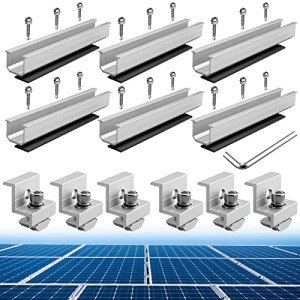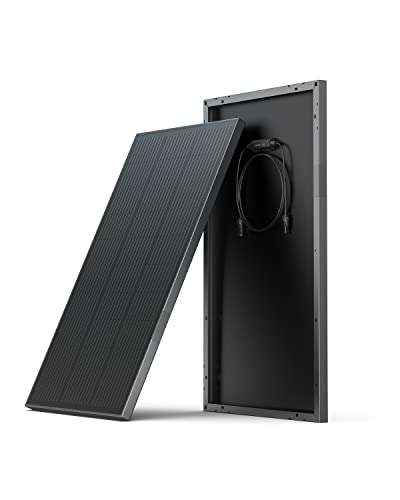When you’re diving into the world of solar energy, picking the right solar panel type can feel like a big task, but it doesn't have to be! Understanding the different solar panel types is key to making your experience of installing solar panels on roof a breeze. Let’s break it down.
First up, we have monocrystalline panels. These are the fan favorites. They’re sleek, efficient, and take up less space on your roof. If you're all about maximizing energy output and you have the budget for it, monocrystalline panels are a solid choice.
Next, we’ve got polycrystalline panels. These guys are affordable and get the job done, but they tend to be a bit less efficient than monocrystalline. If you have a larger roof area, these can be a smart pick without breaking the bank.
Don’t forget about thin-film panels! They’re lightweight and flexible, which can be super handy if your roof has unusual dimensions. While they may not be as efficient as their solid counterparts, they can be great if you need something that fits into tight spaces.
Lastly, consider your local climate. If you live in a shady area or somewhere with lots of cloudy days, certain panels may perform better than others. Think about your specific needs and goals before you dive into installing solar panels on roof. Choosing the right kind will make all the difference in your solar energy journey!
Preparing Your Roof for Installation
Getting your roof ready for installing solar panels is an important step that can make the whole process smoother. First, you want to check the condition of your roof. Make sure there aren’t any leaks, missing shingles, or major wear and tear. If your roof is older or in rough shape, consider handling those repairs before diving into solar. A well-maintained roof is crucial for supporting those panels and ensuring you get the most out of your investment.
Next up, think about the angle and orientation of your roof. Solar panels work best when they’re facing the sun directly. If you have a roof that faces south, you’re in luck! But if your roof has some tricky angles or is shaded by trees or buildings, you might want to chat with a solar expert. They can help determine the best placement for maximum efficiency when installing solar panels on roof.
Also, check if your roof can handle the weight of solar panels. Most roofs can do this without a problem, but some might need reinforcements, especially if they’re older or made from lightweight materials. An inspection by a professional can give you peace of mind. And while you’re at it, find out about any local regulations or permits needed for installing solar panels on roof. Different areas have different rules, so it’s smart to be informed before you start.
Lastly, clean your roof! Dust, leaves, and debris can reduce the efficiency of your solar panels. A simple clean-up makes a big difference. Once everything's set, you’ll be all set for the exciting part—getting your solar panels installed and starting to save on energy bills!
Anbte 6-Pack Universal Solar Panel Holder Kit
Secure your solar panels with ease using this versatile holder kit designed for all your installation needs
Product information
$31.99
Product Review Score
4.51 out of 5 stars
102 reviewsProduct links
Step by Step Installation Guide
Installing solar panels on your roof can seem like a daunting task, but it doesn’t have to be! Follow these simple steps, and you’ll have your panels up and running in no time.
First, gather all your materials. You’ll need the solar panels themselves, mounting brackets, rails, and some basic tools like a drill and a wrench. Check the weather, too. It’s best to install on a clear, dry day. Safety first! Make sure you have a sturdy ladder and follow safety protocols when working on your roof.
Next, identify the best spot on your roof for sunlight exposure. Usually, a south-facing slope works best, but east and west can work in some cases, too. Once you pick the spot, measure it out and place the mounting brackets according to your solar panel layout. Be sure to secure them tightly to avoid any movement.
Now, it’s time to attach the solar panels! Lift each panel and align them with the brackets, then use your tools to fasten them securely. Make sure everything is tight and neat, as loose panels can lead to issues later. Double-check that the panels are aligned for maximum sun exposure.
Finally, connect the wiring from your solar panels to the inverter. This step is crucial as it converts the solar energy into usable electricity for your home. Follow the instructions that come with your panels closely to ensure a safe and effective connection. Once everything is hooked up, give it a test run to make sure you’re ready to start saving on your energy bill!
HQST 100W Solar Panel Kit with Charge Controller
Power your adventures with sustainable energy and keep your devices charged anytime, anywhere
Product information
$164.99
Product Review Score
4.29 out of 5 stars
229 reviewsProduct links
Maintaining Your Solar Panels Long Term
Once you've gone through the process of installing solar panels on your roof, you want to keep them in tip-top shape for the long haul. Maintaining your panels isn't a chore—it's pretty straightforward and can save you a ton of headaches (and cash) down the road.
First off, keep an eye on the cleanliness of your panels. Dust, debris, and even bird droppings can reduce their efficiency. A quick rinse with a hose usually does the trick, but if you've got stubborn grime, a soft sponge and some soapy water can help. Just make sure to do this on a cooler day to avoid water spots!
Next, check for any shading issues. Over time, trees around your home might grow and block sunlight from hitting your panels. Trim back any branches that might cast a shadow on them. Even a little shade can mess with how much energy your system collects.
Also, keep an eye on your inverter lights. These little gadgets let you know if everything’s running smoothly. If you see a red light or an error message, don’t panic! It could just mean it’s time to reset or check the connections. Having your manufacturer’s contact info handy is a smart move for these situations.
Finally, consider an annual professional inspection. Experts can catch any potential issues before they turn into big problems. They’ll ensure your system is working efficiently and that everything is in good shape. By putting in a little effort now, you’ll help your solar panels perform like champions for years to come.






